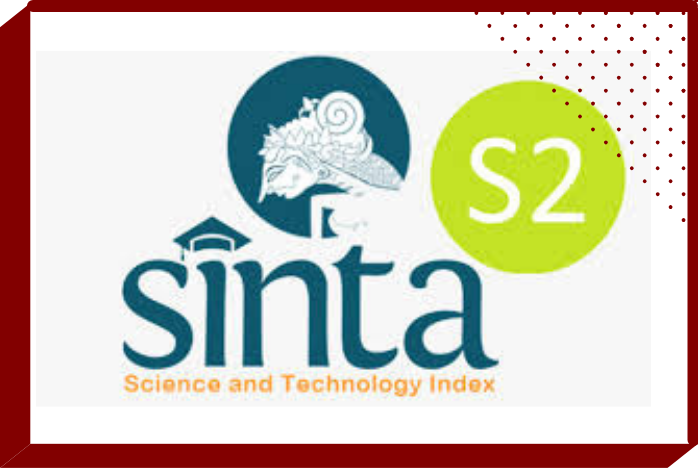Pemertahanan Bahasa Jawa dalam Komunikasi Anggota Organisasi Ikatan Mahasiswa Bidikmisi Universitas Trunojoyo Madura (Kajian Sosiolinguistik)
 Abstract views: 606
,
Abstract views: 606
,
 PDF downloads: 703
PDF downloads: 703
Abstract
This study aims to determine the maintenance of Javanese language by speakers in organization of the Bidikmisi Student Association at Trunojoyo Madura University. Language preservation is one of the studies in the sociolinguistic. Sociolinguistic combine two fields of science, namely sociology which studied social life and linguistics studied about language. The research method used was a descriptive qualitative method because the data studied in the form of words, not variables. The data collection technique used were recording, interview, observation, and documentation. The data analysis technique used was taxonomic analysis. The data sources analyzed were Javanese’s speaker. The results of the study showed that language maintenance in the Bidikmisi Student Association at Trunojoyo Madura University still being pursued. The defense of the Javanese language evidenced by the presence of conversations used Javanese language on formal or informal situations between members of the organization. There are three factors which can cause a language friction. There are defense strategies that can be attempted to conserve the language.
Downloads
References
Anggraeni, A. W. (2016). Pemertahanan Bahasa Using pada Masyarakat Multietnis. BELAJAR BAHASA: Jurnal Ilmiah Program Studi Pendidikan Bahasa dan Sastra Indonesia, 1(2).
Armstrong, E., & Ferguson, A. (2010). Language, meaning, context, and functional communication Language, meaning, context, and functional communication Language, Meaning, Context, and Functional Communication. Aphasiology, 24(4), 480–496.
Aslinda LS. (2007). Pengantar sosiolinguistik. Bandung: PT Refika Aditama.
Bogdan, R., Taylor, S. J., & Taylor, S. S. (1975). Introduction to qualitative research methods: A phenomenological approach to the social sciences. Wiley-Interscience.
Chaer, A. (2007). Kajian Bahasa: Struktur Internal, Pemakaian, dan Pemelajaran. Jakarta: Rineka Cipta.
Chaer, A. dan Leonie Agustina. (2010). Sosiolinguistik: Perkenalan Awan. Jakarta: Rineka Cipta.
Creswell, J. W., & Creswell, J. D. (2017). Research design: Qualitative, Quantitative, and Mixed Methods Approaches. Sage publications.
Ellis, D. G. (1999). From Language to Communication. In From Language To Communication. Routledge.
Fishman, J. A. (1997). The sociology of language. In Sociolinguistics (pp. 25–30). Springer.
Kemendikbud, P. B. (2016). Kamus Besar Bahasa IndonesiA (Edisi 5). Balai Pustaka.
Kridalaksana, H. (1993). Linguistic Dictionary. Jakarta: PT Gramedia Pustaka Utama.
Morand, D. A. (2000). Language and power: An empirical analysis of linguistic strategies used in superior-subordinate communication. Journal of Organizational Behavior, 21(3), 235–248.
Panggabean, A. A. (2017). Pemertahanan Bahasa Batak Toba di Desa Silakkidir Kecamatan Hutabayu Raja Kabupaten Simalungun: Tinjauan Sosiolinguistik.
Pateda, M. (1987). Sosiolinguistik. Bandung: Angkasa.
Siregar, B. U., Isa, D. S., & Husni, C. (1998). Pemertahanan Bahasa dan Sikap Bahasa: Kasus Masyarakat Bilingual di Medan. Pusat Pembinaan dan Pengembangan Nasional.
Sumarsono. (1990). Pemertahanan bahasa Melayu Loloan di Bali. Jakarta: Universitas Indonesia
Sumarsono. (2007). Sosiolinguistik. Yogyakarta: Pustaka Pelajar.
Susanto, M. A., & Sandi, E. A. (2020). Aktualisasi Bahasa Jawa Youtuber Upaya Pemertahanan Bahasa Jawa pada Masa Pandemi Covid-19. GHANCARAN: Jurnal Pendidikan Bahasa dan Sastra Indonesia, 2(1), 45–55.
Syahriyani, A. (2017). Pemertahanan Bahasa Jawa dialek Banten pada Guyub Tutur di Kelurahan Sumur Pecung Serang. Buletin Al-Turas, 23(2), 251–266.
Ghancaran: Jurnal Pendidikan Bahasa dan Sastra Indonesia uses an Open Access Policy under the Creative Commons Attribution-ShareAlike 4.0 International License. Authors publishing in this journal agree to the following terms:
- Ghancaran Journal holds the copyright and grants the journal rights for first publication with the work simultaneously licensed under a

The work is distributed under Creative Commons Attribution-ShareAlike 4.0 International License which allows others to share, copy, and redistribute the material in any media or format and adapt, remix, change, and develop the material even for commercial purposes, as long as it is stated credit and license derivative works under similar terms. - Authors may make additional contractual arrangements for non-exclusive distribution of the journal's published work version.
- Authors are permitted to post their work online (e.g., in institutional repositories or on their websites) before and during submission, as doing so may lead to productive exchange.



















